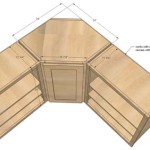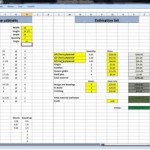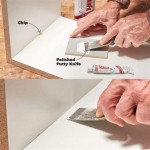How to Recycle Kitchen Waste
Kitchen waste, often referred to as food scraps, comprises various organic materials generated during food preparation and consumption. This includes leftover food, fruit and vegetable peels, eggshells, coffee grounds, tea leaves, and even paper towels contaminated with food. While kitchen waste is commonly disposed of in landfills, where it decomposes and releases methane gas, a potent greenhouse gas, recycling it offers a sustainable and environmentally friendly alternative. By properly recycling kitchen waste, individuals can significantly reduce their environmental footprint and contribute to a healthier planet.
Composting: Transforming Waste into Valuable Resource
Composting is a natural process of breaking down organic matter, transforming it into a nutrient-rich soil amendment known as compost. This process is driven by microorganisms, such as bacteria and fungi, that feed on the organic materials and release nutrients in a form that plants can readily absorb. Composting provides several environmental benefits, including reducing the amount of waste sent to landfills, enriching soil fertility, and promoting sustainable gardening practices.
There are different methods of composting, ranging from simple backyard composting to more sophisticated systems. The most common method is the use of compost bins or tumblers. Compost bins are typically made of plastic or wood and are designed to hold the organic materials while allowing air circulation. Compost tumblers are rotating bins that facilitate faster decomposition by mixing the materials and providing continuous aeration. These systems require regular turning to ensure proper aeration and moisture levels.
For successful composting, it is essential to maintain a balanced carbon-to-nitrogen ratio. Carbon-rich materials, such as dry leaves, straw, and shredded paper, provide the energy for the decomposers, while nitrogen-rich materials, such as food scraps, coffee grounds, and tea leaves, provide the building blocks for new plant growth. Ideally, the ratio should be around 30:1 (carbon to nitrogen). To achieve this, it's recommended to alternate layers of green (nitrogen-rich) and brown (carbon-rich) materials in the compost bin.
Anaerobic Digestion: Converting Waste into Biogas and Fertilizer
Anaerobic digestion is a biological process that breaks down organic matter in the absence of oxygen. This process is typically carried out in sealed containers or digesters where microorganisms, primarily bacteria, decompose the organic matter and produce biogas, a mixture of methane, carbon dioxide, and other gases, along with a nutrient-rich digestate. Biogas can be used as a renewable energy source for heating, cooking, or electricity generation, while the digestate can be used as a fertilizer or soil amendment.
Anaerobic digestion is a more complex process than home composting and is often undertaken at larger scales, such as municipal wastewater treatment plants or industrial facilities. However, smaller-scale systems are becoming increasingly available, particularly for agricultural and food processing purposes. The benefits of anaerobic digestion include the production of clean energy, reduction of greenhouse gas emissions, and recovery of valuable resources from organic waste.
Vermicomposting: Recycling Kitchen Waste with Worms
Vermicomposting, also known as worm composting, is a process that utilizes worms, primarily red wiggler worms, to break down organic waste. These worms consume the organic matter and produce worm castings, a highly nutrient-rich material that is an excellent fertilizer for plants. Vermicomposting is an effective method for recycling food scraps, coffee grounds, tea leaves, and other kitchen waste.
Vermicomposting bins are typically made of plastic or wood and are designed to provide a suitable environment for the worms. They need to be kept moist, at a moderate temperature, and provided with sufficient food and bedding material, such as shredded paper or cardboard. The worms will consume the organic material and produce castings, which can be harvested and used as a fertilizer. By using vermicomposting, individuals can reduce their kitchen waste, improve soil fertility, and create a more sustainable gardening system.
Properly recycling kitchen waste is an essential part of a sustainable lifestyle. By choosing one or more of these methods, individuals can reduce their environmental impact, conserve resources, and promote a healthier planet. While compost bins are readily available, vermicomposting kits are also accessible. This allows individuals to participate in the process of transforming kitchen waste into valuable resources, contributing to a circular economy where waste is minimized and resources are maximized.

6 Reasons To Recycle Food Waste

Study For Food Waste Recycling Policy Is Key Mit News Massachusetts Institute Of Technology

Organic Waste Recycling

Organic Waste Recycling

Composting Food Waste What You Need To Know Recycle Track Systems

Food Waste Recycling Horry County Solid Authority Sc South Ina

Organic Waste Recycling How To Recycle

Food Waste Recycling In Hong Kong Wikipedia

How To Recycle Food Waste At Home Greentumble

Yorkshire Food Waste Collection Disposal Forge Recycling
Related Posts








